History of Kamianets-Podilskyi
Early History of Kamianets-Podilskyi
Kamianets-Podilskyi is the historic center of Podolia. Its peculiar border location on an inaccessible rocky island, near important land routes and waterways, the most important of which was the Dniester River, predetermined the main function of this settlement - the border fortress.
The territory of the island was already inhabited in ancient times. The earliest archaeological finds are the stone tools of the Neolithic era (about 10,000 years ago) found together with the mammoth tusk. The oldest period of local history is determined by archaeological finds of the Late Bronze Age and Early Iron Age (1200-800 BC), as well as by the remnants of a Scythian settlement of the 7th-4th centuries BC.
The settlement re-emerged at the turn of the 11th-12th centuries as a strong point. Its fortifications were repeatedly rebuilt and were completed in the first half of the 13th century. The settlement was part of the Principality of Galicia-Volhynia. In 1240, it was seriously damaged during the Mongol invasion. Afterwards, Podolia became part of the Golden Horde.
In the middle of the 13th century, the largest Armenian colony in the region formed in Kamianets-Podilskyi. Stone construction became widely spread. In 1362, Algirdas, the Grand Duke of Lithuania, took possession of Podolia. In the second half of the 14th century, large-scale construction of castles began in the region, and Catholic monasteries - in the town.
In 1374, the Magdeburg Law was granted to Kamianets. In 1379, a large-scale reconstruction of the old stone fortress and other fortifications began. Gradually, the town became an outpost of Catholicism in the south-west of Rus. In 1398, the Armenians built the Church of St. Nicholas, which has survived to the present day. At the end of the 14th century, more than 2,000 people lived in this town.
More Historical Facts…
Kamianets-Podilskyi in the Polish-Lithuanian Commonwealth
In 1434, Kamianets became part of the Polish-Lithuanian Commonwealth. From 1463 to 1793, the town was the administrative center of the Podolia Voivodeship. Podolia received its coat of arms - the sun with a cross over it. During this time, a lot of religious and defense structures were built, which in many ways formed the present image of the city.
At the beginning of the 16th century, the main Catholic church of Podolia was built in Kamianets - the Cathedral Church of the Apostles Peter and Paul. The town was standing on an important trade route between the West and the East. At the end of the 16th century, the population of the town was about 10-12 thousand people.
In 1672, Kamianets was captured by the Ottoman Empire. Most of the local population left the town. Almost all churches were turned into mosques. More than 30% of stone buildings were dismantled to construct additional fortifications. The Turks turned Kamianets into a powerful fortress. A stone bridge was built between the fortress and the town. After several years of defense construction, it was turned into one of the most powerful fortresses of the Ottoman Empire.
The capture of the town by the Turks caused great confusion not only in Poland, but also in the whole Christian world. The Poles repeatedly tried to regain Kamianets. In October 1699, according to the Treaty of Karlowitz, Podolia with the town of Kamianets were returned to the Polish-Lithuanian Commonwealth.
Kamianets-Podilskyi in the Russian Empire
In 1793, according to the Second Partition of Poland, the western part of Podolia along the Zbruch River became part of Austria-Hungary, the eastern part was annexed to the Russian Empire. In 1795, Kamianets-Podilskyi became the administrative center of the Podolsky Governorship, from 1797 - the Podolskaya Province. In 1796, a new coat of arms of the town was approved: the sun with 16 rays and a cross over it.
In 1842, Emperor Nicholas I visited Kamianets-Podilskyi and issued an order to the Podolsky governor to ban making any changes in the architectural appearance of the town fortress and fortifications. In 1892, a number of enterprises operated here: a candle factory, 3 breweries, a tobacco factory, 3 printing houses, 13 workshops. In the 19th century, Kamianets-Podilskyi becomes an important cultural center. In 1890, a telephone connection was introduced in the town. In 1901, the first movie theater was opened.
In 1840, according to the first all-Russian census of towns, Kamianets-Podilskyi had 14.7 thousand people, in 1862 - 18.9 thousand, in 1897 - 40 thousand, on the eve of the First World War - 50.5 thousand.
August 4, 1914, during the First World War, the Austro-Hungarian army entered Kamianets-Podilskyi. August 6, 1914, they left the town. In the spring of 1916, Emperor Nicholas II visited the military hospital of Kamianets-Podilskyi. In the summer of the same year, Mikhail Bulgakov, the future author of the Master and Margarita, served in this hospital.
During the Civil War in the territory of the former Russian Empire, the power in the town changed several times. November 16, 1920, regular units of the Red Army entered Kamianets-Podilskyi, and Soviet power was established here.
Kamianets-Podilskyi in Soviet Ukraine
In 1921, the Kamianets-Podilskyi Agricultural Institute was opened. In 1923, the Old Fortress was declared a state historical and cultural reserve. In 1921, 26.6 thousand people lived in the city, in 1926 - 31,000, in January 1939 - 36.4 thousand.
September 22, 1937, Kamianets-Podilskyi Oblast was established. In 1921-1939, Kamianets-Podilskyi was a border city. The border with Poland was only 30 km from Kamianets-Podilskyi along the Zbruch River, the border with Romania - 24 km from the city along the Dniester River.
June 22, 1941, in the first hours after Germany attacked the USSR during the Second World War, Kamianets-Podilskyi was heavily bombed, a lot of unique architectural monuments were completely destroyed or severely damaged, hundreds of civilians were killed. July 10, 1941, the advancing German troops occupied the city.
July 20, 1941, a ghetto was created in Kamianets-Podilskyi. At the end of July 1941, about 30 thousand Jews were concentrated in it. By February 1943, all Jews in the Kamianets-Podilskyi ghetto were killed. March 26, 1944, the city was liberated by Soviet troops.
During the Second World War, the population of the city was halved (from 55,000 in 1940 to 26,000 in 1945). Irreparable damage was caused to the architectural heritage of Kamianets-Podilskyi. About 90% of residential buildings in the Old Town were destroyed, industrial enterprises were completely destroyed.
In the postwar years, a number of large enterprises were opened in the city. Kamianets-Podilskyi quickly became a relatively large industrial center. February 4, 1954, the Kamianets-Podilskyi region was renamed Khmelnytskyi. In 1977, Kamianets-Podilskyi was declared a state historical and architectural reserve. July 8, 1980, the torch relay of the Moscow Olympic Games passed through Kamianets-Podilskyi. July 5, 1986, the 100,000th resident of the city was born (Vitaly Kravtsov).
Kamianets-Podilskyi in Independent Ukraine
In the period from 1991 to 2000, the work of most industrial enterprises in the city partially or completely stopped. Kamianets-Podilskyi experienced years of mass unemployment, impoverishment of the population and, accordingly, the rise of crime. This city became one of the main criminal centers of Ukraine. In 1993, the mass migration of the Jewish population of the city to Israel and the US began. In 1995, the city airport was closed.
In 1996-2006, hundreds of small private enterprises were opened operating mainly in the areas of production, services, and trade. The central streets of Kamianets-Podilskyi noticeably changed - dozens of private restaurants, shops, and hotels appeared. The restoration of the historic sites of the Old Town began. Kamianets-Podilskyi become actively visited by foreign tourists.
Picturesque streets of Kamianets-Podilskyi
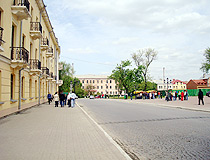
Walking down the old street in Kamianets-Podilskyi
Author: Valery Podlesny
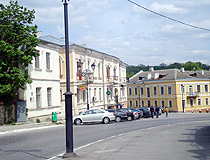
Exploring the preserved historic center of Kamianets-Podilskyi
Author: Valery Podlesny
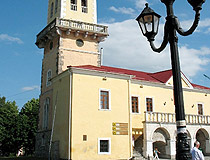
The Town Hall of Kamianets-Podilskyi
Author: Oleg Krivolapov
Kamianets-Podilskyi - Features
From the 11th century, Kamianets-Podilskyi was known as Kamianets (from the East Slavic word meaning “rock”), because of the rocky nature of the terrain of this area. In later sources and chronicles, a new, double name appeared - Kamianets-Podilskyi, with mention of its location (Podolia), which was necessary to distinguish Kamianets from the towns with the same name, in particular Kamianets-Lithuanian. In the late 19th - early 20th centuries, the town was called “Kamenets-Podolsk”.
Kamianets-Podilskyi is located in a picturesque area on the Podolian Upland. The Smotrych River flows through the territory of the city, about 20 km from its confluence with the Dniester River. This is the southern part of the Khmelnytskyi region, which is characterized by hilly terrain with numerous ravines. The average temperature in January is minus 5 degrees Celsius, in July - plus 19.8 degrees Celsius.
The most developed industries are building materials, mechanical engineering, the production of tools. Also there are woodworking enterprises, light, and food industries. The company “Podilskiy Cement” is one of the largest producers of cement in Ukraine.
The city-museum of Kamianets-Podilskyi is one of the most popular tourist centers in Ukraine, the third in the number of architectural monuments. The National Historical and Architectural Reserve “Kamianets” is included in the UNESCO World Heritage List. There is a huge number of architectural monuments, museums, galleries, and antique shops. The City Day of Kamianets-Podilskyi is celebrated on the third Saturday of May.
Kamianets-Podilskyi is also known as an outstanding Ukrainian festival center - various cultural events, ethnographic, historical, and other festivals take place here. Thanks to numerous architectural monuments and, above all, the Old Fortress, various historical reconstructions are popular in the city - protecting the town from the Ottoman invasion, medieval battles, and tournaments. Thanks to the hot air balloon festival, Kamianets-Podilskyi has become one of the country’s main aeronautical centers.
Kamianets-Podilskyi is sometimes called the “city of seven cultures” - by the number of nationalities of people who contributed to its development (Ukrainians, Poles, Jews, Lithuanians, Turks, Tatars, Armenians).
The Main Attractions of Kamianets-Podilskyi
Thanks to the unique combination of historical-architectural and urban heritage, the landscape of the Smotrych canyon, the “Old Town” of Kamianets-Podilskyi has the status of a state historical and architectural reserve. In total, there are about 200 architectural monuments of the 11th-19th centuries.
The powerful defensive fortifications of the “Old Town”, the fortress and the fortress bridge, the Turkish bastion, the combination of religious buildings of different religions leave a unique impression. The greatest value of Kamianets-Podilskyi is its almost completely preserved historic center without inclusions of the 20th century architecture.
The main attraction of the city is Kamianets-Podilskyi Castle, the first buildings of which date back to the 11th-12th centuries, and the main fortifications - to the 16th-17th centuries. Defensive fortifications in Kamianets-Podilskyi are among the best preserved fortifications in Eastern Europe. Opening hours: 10:00-19:00 (in winter - until 17:30).
Saints Peter and Paul Cathedral (the 14th-16th centuries) - the main religious building of the Old Town of Kamianets-Podilskyi. It is the only Christian church in the world with a minaret. Tatarska Street, 20.
Stephen Bathory Tower (1564-1585). This seven-tiered tower is the largest defensive structure of the Kamianets-Podilskyi fortification system. Staroposhtovyy Uzviz Street.
Dominican Monastery (the 15th-17th centuries). The Dominican Church of St. Nicholas, located at the highest point of the Old Town, is considered one of the oldest churches of Kamianets-Podilskyi. Dominikanska Street, 3.
Town Hall. The building of the Polish magistrate was constructed in the center of Kamianets-Podilskyi after the Magdeburg Law was granted to the town in 1374. This is the oldest town hall in Ukraine. There are several museums inside. Polskyy Rynok Square. Opening hours: 10:00-18:00 (in winter - 09:00-17:00).
Polish Gate (1548-1561) - a unique hydraulic engineering fortification, which served simultaneously as a town gate, defensive tower, and dam. Ruska Street, 2.
Ruins of the Armenian Cathedral (the 15th-18th centuries). The remains of this hige church are located in the center of the quarter, where the Armenians of Kamianets-Podilskyi lived since the 14th century. Piatnytska Street, 11.
Bishop’s Palace (Museum of Antiquities). In the halls of this small museum, you can see the dwelling of ancient people with their tools of labor and household items. In the courtyard, there are several pagan idols. Ioanno-Predtechynska Street, 2. Opening hours: 09:00-18:00 (in winter - until 17:00).
Theological Seminary (Art Gallery). The museum exhibition presents paintings, drawings, and sculptures of the 17th-20th centuries, as well as a collection of icons of different religions. Piatnytska Street, 11. Opening hours: 10:00-18:00 (in winter - 09:00-17:00).
Museum of Miniatures “Castles of Ukraine” - an open air museum with beautiful replicas (1:20) of the 16 most famous castles of Ukraine recreated to the smallest detail. Starobulvarna Street, 10. Opening hours: 09:00-20:00 (Saturday, Sunday - until 21:00).
National Park “Podilski Tovtry”. The largest national park of Ukraine, it is included in the world heritage of UNESCO, as one of the massifs of the Beech forests of the Carpathians and other regions of Europe. The combination of unique man-made objects and natural complexes has created exceptional conditions for the development of health and informative tourism. Polskyy Rynok Square, 6.


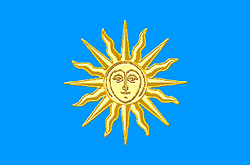
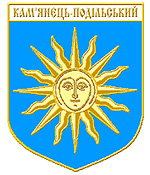



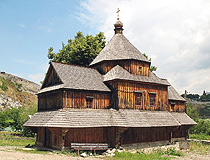
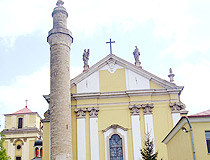
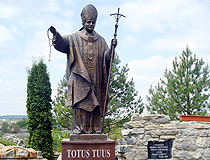
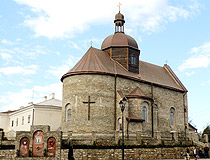
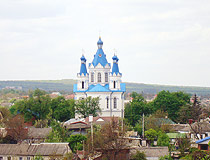
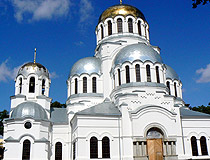
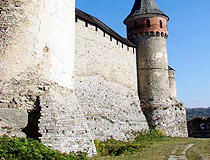
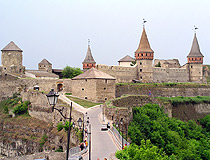
The comments of our visitors